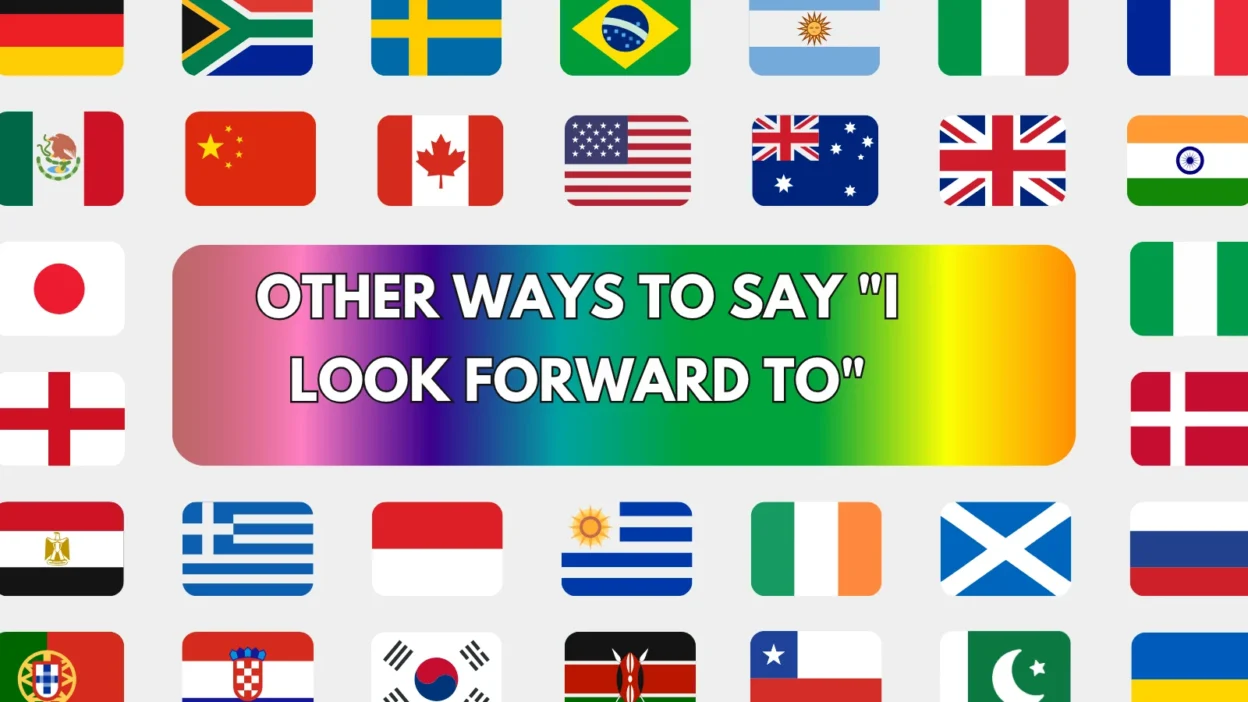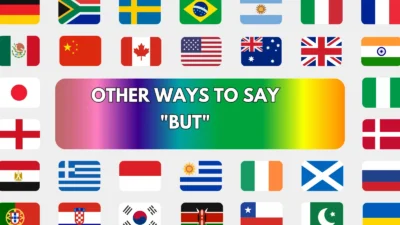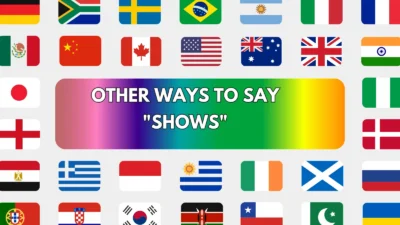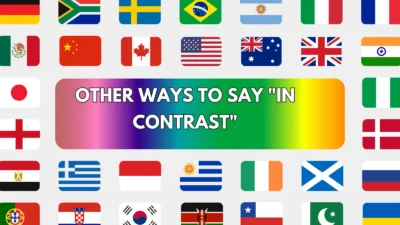The phrase “I look forward to” is a classic way to express enthusiasm or anticipation in professional and personal messages. It’s polite, positive, and widely accepted — but overusing it in emails or conversations can sound repetitive and bland.
To keep your communication dynamic and engaging, it’s helpful to use a variety of alternatives that match different tones and situations. Below are 25 powerful and polite ways to say “I look forward to”, complete with explanations and examples to help you choose the right one for your message.
1. I’m Excited About
Meaning:
Expresses genuine enthusiasm or anticipation about something upcoming.
Detailed Explanation:
This phrase adds emotional energy and is great when you want to sound upbeat and eager.
Scenario Example:
I’m excited about our upcoming collaboration on the new campaign.
Best Use:
Creative projects, team messages, friendly professional settings.
Tone:
Positive, enthusiastic, informal.
2. I Anticipate
Meaning:
Conveys formal expectation of something happening soon.
Detailed Explanation:
More professional than emotional, this is great for planning and scheduling contexts.
Scenario Example:
I anticipate your response by the end of the week.
Best Use:
Formal writing, reports, proposals.
Tone:
Formal, confident, direct.
3. I Can’t Wait To
Meaning:
Shows eagerness and excitement for a future event or action.
Detailed Explanation:
Very casual and full of energy — best avoided in very formal settings.
Scenario Example:
I can’t wait to see how the final design turns out.
Best Use:
Friendly emails, internal messages, personal communication.
Tone:
Casual, enthusiastic, playful.
4. I’m Looking Forward With Excitement To
Meaning:
Adds stronger emotion to the original phrase.
Detailed Explanation:
It keeps the familiar structure while intensifying the excitement and positivity.
Scenario Example:
I’m looking forward with excitement to our joint workshop next week.
Best Use:
Event invitations, team emails, speaker engagements.
Tone:
Warm, positive, professional.
5. I Eagerly Await
Meaning:
Shows that you’re very ready and interested in what’s coming.
Detailed Explanation:
Ideal when you want to sound respectful yet enthusiastic.
Scenario Example:
I eagerly await your confirmation regarding the meeting.
Best Use:
Polished follow-ups, invitations, formal communication.
Tone:
Polite, formal, enthusiastic.
6. I’m Awaiting
Meaning:
Communicates that you are expecting something to arrive or happen.
Detailed Explanation:
A professional and neutral tone that sounds polite but firm.
Scenario Example:
I’m awaiting your feedback on the submitted draft.
Best Use:
Client communication, reports, formal emails.
Tone:
Professional, neutral, respectful.
7. I’m Keen To
Meaning:
Shows interest and willingness to do something.
Detailed Explanation:
Commonly used in UK English; sounds friendly yet professional.
Scenario Example:
I’m keen to discuss the next steps in our partnership.
Best Use:
Business meetings, collaboration proposals.
Tone:
Friendly, interested, professional.
8. I’m Hoping To
Meaning:
Indicates that you wish or intend for something to happen soon.
Detailed Explanation:
A softer version of “looking forward” that adds a hopeful tone.
Scenario Example:
I’m hoping to connect with you later this week.
Best Use:
Informal conversations, gentle requests.
Tone:
Hopeful, gentle, casual.
9. I’m Counting On
Meaning:
Expresses reliance or trust in something happening.
Detailed Explanation:
Adds slight pressure or urgency while keeping it polite.
Scenario Example:
I’m counting on your team to deliver the report on time.
Best Use:
Leadership communication, deadline discussions.
Tone:
Confident, professional, firm.
10. I’m Enthusiastic About
Meaning:
Expresses positive energy and involvement.
Detailed Explanation:
Polite, energetic, and perfect for workplace communication.
Scenario Example:
I’m enthusiastic about presenting our new proposal.
Best Use:
Presentations, proposals, team encouragement.
Tone:
Motivational, optimistic, formal.
11. I Am Eager To See
Meaning:
Demonstrates keen interest in witnessing a result or update.
Detailed Explanation:
A respectful phrase that keeps the tone light yet engaged.
Scenario Example:
I am eager to see your feedback on the concept design.
Best Use:
Client relations, project updates.
Tone:
Polite, sincere, professional.
12. I Am Anxious To
Meaning:
Conveys eagerness, though it may suggest nervous anticipation.
Detailed Explanation:
Use it carefully, as it may sound too intense in some contexts.
Scenario Example:
I’m anxious to hear your decision on the offer.
Best Use:
Follow-ups, personal messages, sensitive timing.
Tone:
Eager, urgent, slightly emotional.
13. I Welcome the Opportunity To
Meaning:
Expresses appreciation for being involved or invited.
Detailed Explanation:
Very respectful and professional — perfect for job or business situations.
Scenario Example:
I welcome the opportunity to work with your team on this initiative.
Best Use:
Job applications, proposals, formal introductions.
Tone:
Grateful, formal, confident.
14. I Am Glad To Be Involved In
Meaning:
Shows contentment and appreciation for being included.
Detailed Explanation:
Emphasizes satisfaction, making it great for team settings.
Scenario Example:
I’m glad to be involved in this exciting launch.
Best Use:
Team updates, onboarding, internal projects.
Tone:
Appreciative, warm, encouraging.
15. It Will Be a Pleasure To
Meaning:
Polite and classy way to show that you’re happy to take part.
Detailed Explanation:
Carries a traditional, elegant tone that adds grace to your message.
Scenario Example:
It will be a pleasure to join you for the panel discussion.
Best Use:
Formal invitations, speaker arrangements.
Tone:
Polite, gracious, professional.
16. I Am Ready To
Meaning:
Shows you are prepared and willing.
Detailed Explanation:
A confident phrase to emphasize your availability or commitment.
Scenario Example:
I am ready to begin the onboarding process whenever you’re available.
Best Use:
Start dates, action-based communication.
Tone:
Confident, clear, assertive.
17. I Am Happy To Support
Meaning:
Shows kindness and readiness to help.
Detailed Explanation:
A warm and humble way to show you’re willing to assist.
Scenario Example:
I’m happy to support your efforts in finalizing the presentation.
Best Use:
Teamwork, collaborative emails.
Tone:
Supportive, polite, humble.
18. I’m Delighted To
Meaning:
Stronger version of “happy to,” showing more joy or satisfaction.
Detailed Explanation:
Excellent for client interactions or congratulatory responses.
Scenario Example:
I’m delighted to be part of this exciting journey.
Best Use:
Thank-you emails, celebratory notes.
Tone:
Joyful, professional, warm.
19. I Eagerly Look Forward To
Meaning:
A more enthusiastic version of the original phrase.
Detailed Explanation:
Adds formality and shows strong interest.
Scenario Example:
I eagerly look forward to discussing our collaboration.
Best Use:
Formal yet passionate communications.
Tone:
Polite, excited, confident.
20. I’m Ready and Excited To
Meaning:
Combines preparedness with emotional readiness.
Detailed Explanation:
Strong and energetic — great when showing full engagement.
Scenario Example:
I’m ready and excited to kick off this new campaign.
Best Use:
Motivational leadership, new project intros.
Tone:
Bold, positive, action-oriented.
21. Looking Ahead To
Meaning:
Forward-thinking and optimistic expression.
Detailed Explanation:
This is a subtle and modern way to show anticipation.
Scenario Example:
Looking ahead to next quarter, we expect strong growth.
Best Use:
Reports, strategy emails.
Tone:
Visionary, confident, modern.
22. I’ll Be Glad To
Meaning:
Shows politeness and readiness to do something.
Detailed Explanation:
A respectful and classic phrase.
Scenario Example:
I’ll be glad to provide the materials before Friday.
Best Use:
Replies, commitments, support emails.
Tone:
Polite, cooperative, professional.
23. I’m Interested In
Meaning:
Conveys genuine curiosity and openness to learning or engaging.
Detailed Explanation:
Less about commitment, more about showing connection or curiosity.
Scenario Example:
I’m interested in learning more about your new platform.
Best Use:
Networking, research emails, introductions.
Tone:
Polite, open, professional.
24. I’m Open To
Meaning:
Willingness and flexibility toward a discussion or opportunity.
Detailed Explanation:
Shows cooperation without overcommitting — good for negotiation.
Scenario Example:
I’m open to discussing new pricing structures.
Best Use:
Negotiation, planning, exploratory talks.
Tone:
Flexible, neutral, respectful.
25. I Hope We Can Connect Soon
Meaning:
A soft and friendly way to express interest in meeting or talking.
Detailed Explanation:
Very useful in outreach or cold email settings.
Scenario Example:
I hope we can connect soon to talk about potential synergies.
Best Use:
Networking, client outreach, first-time contact.
Tone:
Friendly, light, optimistic.
Conclusion
While “I look forward to” is a dependable phrase, using different expressions can help you sound more natural, intentional, and memorable. Whether you want to sound more formal, casual, or enthusiastic — you now have 25 clear alternatives to make your communication more engaging.




